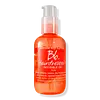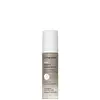What's inside
What's inside
 Key Ingredients
Key Ingredients

No key ingredients
 Benefits
Benefits

No benefits
 Concerns
Concerns

 Ingredients Side-by-side
Ingredients Side-by-side

Dimethicone
EmollientHydrogenated Ethylhexyl Olivate
EmollientIsododecane
EmollientDimethiconol
EmollientVitis Vinifera Seed Extract
AntimicrobialGardenia Taitensis Flower Extract
Skin ConditioningBis-Cetearyl Amodimethicone
Macadamia Ternifolia Seed Oil
EmollientHydrogenated Olive Oil Unsaponifiables
EmollientCocos Nucifera Oil
MaskingVitis Vinifera Seed Oil
EmollientPrunus Amygdalus Dulcis Oil
Skin ConditioningArgania Spinosa Kernel Oil
EmollientCarthamus Tinctorius Seed Oil
MaskingButyl Methoxydibenzoylmethane
UV AbsorberEthylhexyl Methoxycinnamate
UV AbsorberEthylhexyl Salicylate
UV AbsorberSqualane
EmollientTocopherol
AntioxidantLinalool
PerfumingButylphenyl Methylpropional
PerfumingHexyl Cinnamal
PerfumingLimonene
PerfumingParfum
MaskingDimethicone, Hydrogenated Ethylhexyl Olivate, Isododecane, Dimethiconol, Vitis Vinifera Seed Extract, Gardenia Taitensis Flower Extract, Bis-Cetearyl Amodimethicone, Macadamia Ternifolia Seed Oil, Hydrogenated Olive Oil Unsaponifiables, Cocos Nucifera Oil, Vitis Vinifera Seed Oil, Prunus Amygdalus Dulcis Oil, Argania Spinosa Kernel Oil, Carthamus Tinctorius Seed Oil, Butyl Methoxydibenzoylmethane, Ethylhexyl Methoxycinnamate, Ethylhexyl Salicylate, Squalane, Tocopherol, Linalool, Butylphenyl Methylpropional, Hexyl Cinnamal, Limonene, Parfum
Isododecane
EmollientNeopentyl Glycol Diheptanoate
EmollientC12-15 Alkyl Benzoate
AntimicrobialIsoamyl Laurate
EmollientDiheptyl Succinate
EmollientEthylene/Propylene/Styrene Copolymer
Polycitronellol T-Butyl Ether
EmollientPPG-3 Benzyl Ether Ethylhexanoate
EmollientPEG/PPG/Polybutylene Glycol-8/5/3 Glycerin
HumectantCapryloyl Glycerin/Sebacic Acid Copolymer
Skin ConditioningParfum
MaskingPhytosteryl Sunflowerseedate
Skin ConditioningButylene/Ethylene/Styrene Copolymer
Bis-(Isostearoyl/Oleoyl Isopropyl) Dimonium Methosulfate
Skin ConditioningDilinoleic Acid/Propanediol Copolymer
EmollientHydrogenated Vegetable Glycerides
EmollientCitronellol
PerfumingLinalool
PerfumingLimonene
PerfumingCitral
PerfumingGeraniol
PerfumingCoumarin
PerfumingIsododecane, Neopentyl Glycol Diheptanoate, C12-15 Alkyl Benzoate, Isoamyl Laurate, Diheptyl Succinate, Ethylene/Propylene/Styrene Copolymer, Polycitronellol T-Butyl Ether, PPG-3 Benzyl Ether Ethylhexanoate, PEG/PPG/Polybutylene Glycol-8/5/3 Glycerin, Capryloyl Glycerin/Sebacic Acid Copolymer, Parfum, Phytosteryl Sunflowerseedate, Butylene/Ethylene/Styrene Copolymer, Bis-(Isostearoyl/Oleoyl Isopropyl) Dimonium Methosulfate, Dilinoleic Acid/Propanediol Copolymer, Hydrogenated Vegetable Glycerides, Citronellol, Linalool, Limonene, Citral, Geraniol, Coumarin
 Reviews
Reviews

Alternatives
Ingredients Explained
These ingredients are found in both products.
Ingredients higher up in an ingredient list are typically present in a larger amount.
Isododecane is a fragrance, emollient, and solvent.
As an emollient, it helps your skin stay soft and hydrated. Emollients help trap moisture into your skin.
Isododecane's role as a solvent makes it a great texture enhancer. It spreads smoothly on skin and does not leave a sticky feeling behind. Isododecane also helps prevent color transfer in makeup products.
Isododecane is not absorbed into skin.
Learn more about IsododecaneLimonene is a fragrance that adds scent and taste to a formulation.
It's found in the peel oil of citrus fruits and other plants such as lavender and eucalyptus. The scent of limonene is generally described as "sweet citrus".
Limonene acts as an antioxidant, meaning it helps neutralize free radicals.
When exposed to air, oxidized limonene may sensitize the skin. Because of this, limonene is often avoided by people with sensitive skin.
The term 'fragrance' is not regulated in many countries. In many cases, it is up to the brand to define this term. For instance, many brands choose to label themselves as "fragrance-free" because they are not using synthetic fragrances. However, their products may still contain ingredients such as essential oils that are considered a fragrance.
Learn more about LimoneneLinalool is a fragrance and helps add scent to products. It's derived from common plants such as cinnamon, mint, citrus, and lavender.
Like Limonene, this ingredient oxidizes when exposed to air. Oxidized linalool can cause allergies and skin sensitivity.
This ingredient has a scent that is floral, spicy tropical, and citrus-like.
Learn more about LinaloolParfum is a catch-all term for an ingredient or more that is used to give a scent to products.
Also called "fragrance", this ingredient can be a blend of hundreds of chemicals or plant oils. This means every product with "fragrance" or "parfum" in the ingredients list is a different mixture.
For instance, Habanolide is a proprietary trade name for a specific aroma chemical. When used as a fragrance ingredient in cosmetics, most aroma chemicals fall under the broad labeling category of “FRAGRANCE” or “PARFUM” according to EU and US regulations.
The term 'parfum' or 'fragrance' is not regulated in many countries. In many cases, it is up to the brand to define this term.
For instance, many brands choose to label themselves as "fragrance-free" because they are not using synthetic fragrances. However, their products may still contain ingredients such as essential oils that are considered a fragrance by INCI standards.
One example is Calendula flower extract. Calendula is an essential oil that still imparts a scent or 'fragrance'.
Depending on the blend, the ingredients in the mixture can cause allergies and sensitivities on the skin. Some ingredients that are known EU allergens include linalool and citronellol.
Parfum can also be used to mask or cover an unpleasant scent.
The bottom line is: not all fragrances/parfum/ingredients are created equally. If you are worried about fragrances, we recommend taking a closer look at an ingredient. And of course, we always recommend speaking with a professional.
Learn more about Parfum